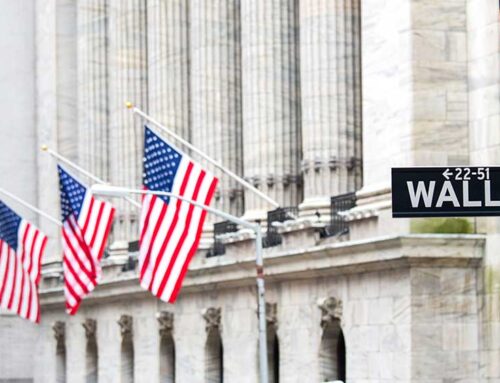Sixteenth Street Community Health Centers ‘pauses’ environmental health program, residents
June 12, 2025
Sixteenth Street Community Health Centers has been delivering medical care to Milwaukee’s south side families for nearly 60 years.
About 30 years ago, Sixteenth Street added an environmental health department that has focused on neighborhood revitalization and community wellness.
Last month, the organization abruptly “paused” some of those programs and let staff go without notice.
That leaves people like Esperanza Gutierrez worrying about the future of environmental health programs in south side neighborhoods. When she moved into her cozy home on South 16th Street three decades ago, Gutierrez made up her mind never to move again.
“The only thing I want (is) to leave here with my feet first. I don’t want to move any more,” Gutierrez says.
Her home is just across the street from Pulaski Park and the Kinnickinnic River that threads through it. “This one’s perfect. I look out my window and I see nature,” Gutierrez says.
But her environment had its problems.
The park was neglected, and the Kinnickinnic River could be dangerous. It was channelized and lined with concrete, leaving it prone to fast-moving floodwaters.
In the early 2010s, the Milwaukee Metropolitan Sewerage District launched a massive plan to return portions of the Kinnickinnic to a more natural state. That would mean demolishing 83 homes between 6th and 16th streets.
“It hit home and I just got involved,” Gutierrez says.
Gutierrez says the Sixteenth Street Community Health Centers’ environmental health team helped neighbors speak out on changes they wanted incorporated into the plan.
“Everything was coordinated through them. We need partnerships in order to survive,” Gutierrez says.
Iris Gonzalez was part of the environmental health team at the time. She says when neighbors wanted to create a civic group, the environmental team lent a hand.
“There was no neighborhood association for the KK River and so that’s what they wanted to do. And they started the Kinnickinnic River Neighbors In Action, which is still going strong and alive today,” Gonzalez says.
READ: South Side Neighbors Engage in Rebirth of Milwaukee’s KK River
Neighbors pushed to breathe life into Pulaski Park and its pavilion. “Back when we started, that building was abandoned. It was boarded up. And now they’ve activated that space and the park,” Gonzalez says.

Susan Bence
/
WUWM
Gonzalez says her job took her door to door. “One of my first jobs was to go be a rain barrel and rain garden saleswoman to knock on doors and say, ‘Hey, do you want some free landscaping,’” she says.
Door knocking led to block parties.
“And people would come out and learn about their rain gardens, but they would also talk about what was happening on the streets. It was an opportunity to not just care for one part of the community, but to really make space to talk about everything in the community,” Gonzalez says.
Gonzalez considers it some of the best work she’s ever done.
“To be focused at the intersection of health and environment and climate and neighborhood revitalization, and really empowering and supporting community leaders like Esperanza and her awesome neighbors,” Gonzalez says.
Vicki Elkin with Fund for Lake Michigan says Sixteenth Street’s innovative environmental approach compelled her organization and others to support the efforts.
“I cannot overstate the importance of the role of Sixteenth Street Community Health Centers in the work that’s happened there. The philosophy was, if you get people to take action themselves or understand why this is important and then do something about it, it’s so much easier then to become an advocate when it comes time to city investments or MMSD’s major projects,” Elkin says.
Elkin says over her 15-year tenure, residents have steadily stepped up to advocate and steward projects.
She thinks back to 2011, as the first houses in the Kinnickinnic floodplain were being demolished — homes that families had taken pride in for generations. “But because of Sixteenth Street, the community actually appreciated it, wanted it and celebrated it,” Elkin says.
Elkin watched the environmental health team build trust and neighborhood involvement. She’s concerned those things will go away now that Sixteenth Street has indefinitely cut staff and paused environmental programs they coordinated.
“I am very disappointed to hear this program is on a pause or has been eliminated by Sixteenth Street Community Health Centers. Other people might step in, maybe, and pick up where Sixteenth Street left off, but having such a trusted voice in the community do this work — no one is really in that position,” Elkin says.
From her home overlooking Pulaski Park, Esperanza Gutierrez says she’ll continue to advocate for her neighborhood, but her feeling of loss runs deep.
“Not only personally, but the whole south side is lost because they had walking clubs, they had yoga clubs, they had biking clubs. We have some community gardens, and they would help with that too. Didn’t they value what we had? We valued it. We weren’t asked,” Gutierrez says.

Courtesy of Kinnickinnic River Neighbors In Action
When asked by WUWM, Sixteenth Street stated it had “paused” programs “for a variety of organizational reasons” and added, “We continue to evaluate the needs of the community and our ability to meet those needs, always with an eye toward a healthier, brighter future for everyone.”
Sixteenth Street’s statement provided by Mari Maldonado: Our environmental health department was founded in the mid-1990s in response to the growing awareness of the effects of the environment on people’s health. Initially the program focused on lead and asthma, two health issues which have significant impact from the environment. Since that time, our organizational structure has evolved, as have our programs, to best accommodate the changing needs of the community
Our department of environmental health and community wellness consisted of our lead outreach program with 5 staff positions, our neighborhood revitalization program with 2 staff positions, and our community wellness program with 3 staff positions. For a variety of organizational reasons, we made the decision to pause the neighborhood revitalization program and community wellness sessions, which included 5 staff positions. We continue to evaluate the needs of the community and our ability to meet those needs, always with an eye towards a healthier, brighter future for everyone.
Search
RECENT PRESS RELEASES
Related Post




